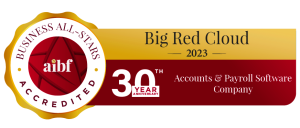Employee attraction and retention have been a huge difficulty for recruiters in recent years. Since 2021, employees have been quitting their jobs in record numbers, with 63% of individuals open to changing job roles this year alone. This phenomenon has been referred to as “The Great Resignation” which has forced employers to reassess their employee attraction and retention strategies and realign them to better suit the needs and wants of the current workforce. Many employers make the mistake of solely focusing on employee attraction rather than retention which can be a huge downfall and can increase turnover rates. Employee retention relies heavily on a combination of factors, including flexible work arrangements, benefits and incentives, career advancement opportunities, company culture, and much more.
At Big Red Cloud, we are aware of the many implications and expenses associated with high turnover rates within an organisation. This is why we have put together this blog post that includes 8 top strategies to help you address any employee attraction and retention issues within your organisation and develop a new and improved retention plan.
1. Promote from within
Many employers make the mistake of recruiting new employees when a vacancy is made available within the company as opposed to filling the position internally. This makes current employees feel undervalued and unappreciated within their current positions in the company. Promoting from within provides employees with a clear path to greater compensation and responsibility while also fostering a sense of worth and value within the organisation. In many organisations, management positions are the only way to advance employee positions which encourages employees to search for other positions elsewhere with better career advancement opportunities. To combat this, employers can create a dual-track career path which allows for regular career progression within the organisation.
2. Invest in employee training programmes
Training is viewed by employees as a valuable retention tool and an investment in their worth and contribution to the company. Employees want to work for a company that encourages and supports their development; if it doesn’t, they’ll likely leave and use their skills elsewhere. Ultimately, a great training and development program can have a wide variety of both short and long-term benefits, such as improving employee retention and engagement, developing innovative abilities, and giving your business a competitive edge.
3. Offer flexible work arrangements
Post-pandemic, many employees wanted to continue to work from home as it promoted a better work-life balance as well as increased productivity and motivation levels. Many companies began to provide their employees with more flexible work arrangements such as hybrid working or fully remote opportunities once they continued to reap the benefits. A recent study carried out by the Future Forum revealed that flexibility is now one of the top factors influencing attraction and retention within organisations, with 93% of all employees wanting flexible schedules and a further 76% wanting flexibility in where they work.
4. Implement recognition and awards
We often forget the power of a simple ‘thank you’ or ‘well done’ when it comes to appreciating our employees. Solely focusing on compensation for your employees’ hard work can still leave them feeling unappreciated and undervalued. Yes, compensation is great, however, regular employee recognition promotes a sense of engagement where employees feel genuinely motivated to work hard and remain with the company.
5. Improve the onboarding process
Recruiting a new employee into your organisation can be a very timely and expensive process and if you have a bad onboarding process within your organisation it can often lead to losing your new recruit within only a matter of months. A poor onboarding process or a lack there of increases turnover rates and lowers productivity levels. Capturing a new employee’s enthusiasm for starting a new job while minimizing other challenges is the key to a successful onboarding process. Starting a new job can be daunting, which is why it is vital to ensure a new employee feels welcome and fully supported within their new position. This will help minimise any chance that they may doubt themselves and their role in the company and deter them from looking for another position elsewhere.
6. Monitor turnover risks
Employee retention isn’t something that you build and then stop working on.To make sure their needs are being addressed and they are currently satisfied within their position, you must maintain frequent contact with your employees. This is particularly true during times of transition. You can monitor any turnover risks by frequently surveying your employees to help uncover any possible concerns they may have. This enables you as their employer to address any issues at hand before it may be too late.
7. Establish a mentor programme
We should not underestimate the power of mentor or buddy programmes within an organisation. All employees no matter their seniority can benefit from having a mentor or buddy within the organisation to help them develop their skill set or keep up to date with new technologies. For instance, younger employees within an organisation can assist senior leaders and employees with keeping up to date with new technologies and ensure they fully understand and know how to operate them. In addition, the younger generation of employees can benefit greatly from guidance from experienced leaders.
8. Prioritise diversity, equity and inclusion
Prioritising diversity, equity and inclusion should be one of your main strategies for staff retention. According to research, a company’s DEI activities are important to employees, and taking social responsibility commitments has a favourable impact on job satisfaction. It is important to ensure that you take action when committing to DEI activities as it can negatively impact the company’s image when it is perceived that it’s ‘all talk – no action’. As an employer, you should set DEI goals that are clear, transparent and measurable such as, increasing the number of women within technological roles or investing in specific DEI causes annually. By prioritising DEI within your company, engagement and experience levels significantly increase and your workforce also feel more recognised and valued within the company.
The past couple of years has transformed workplaces and employee expectations. In order to truly create a great experience for all, employers need to continually listen to their employees, understand what they have to say, act on that information, then communicate the adjustments they have made and why they were made. Not only will this help them gain a competitive edge when it comes to attraction and retention but it will also create a happy and healthy employee experience within your organisation.
Here at Big Red Cloud, we understand how busy running a business can be and how more often than not it can be hard to manage a long list of priorities. The team at Big Red Cloud can help you run a more profitable business with the #1 Irish owned accounting platform. If you are looking for a solution that can help you simplify your management accounting processes and make time for other daily activities, contact us today!




